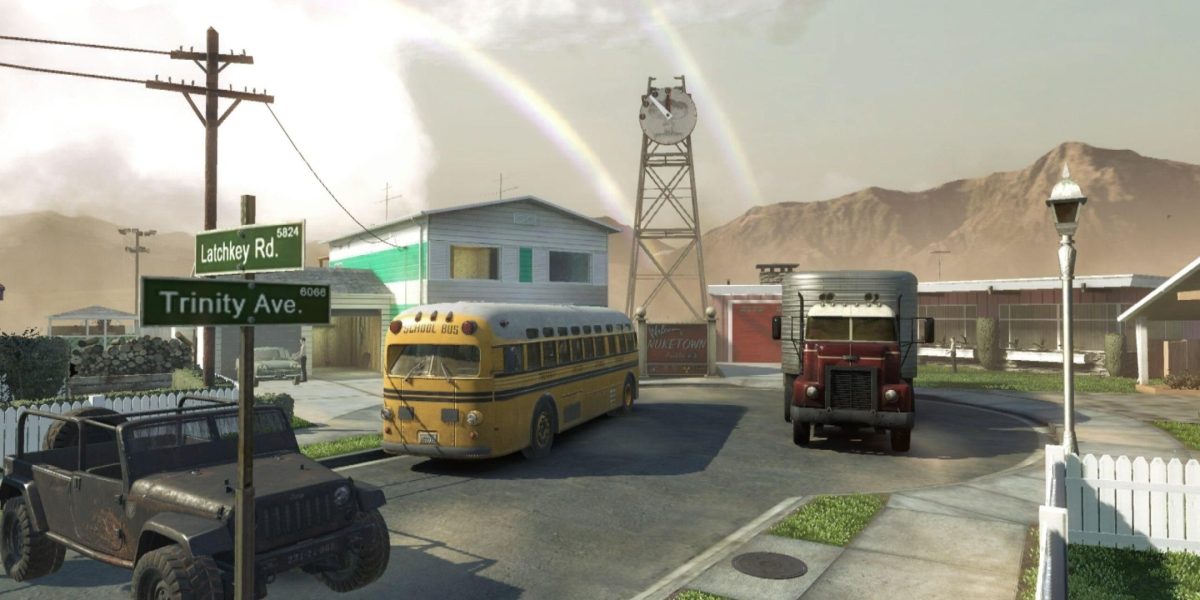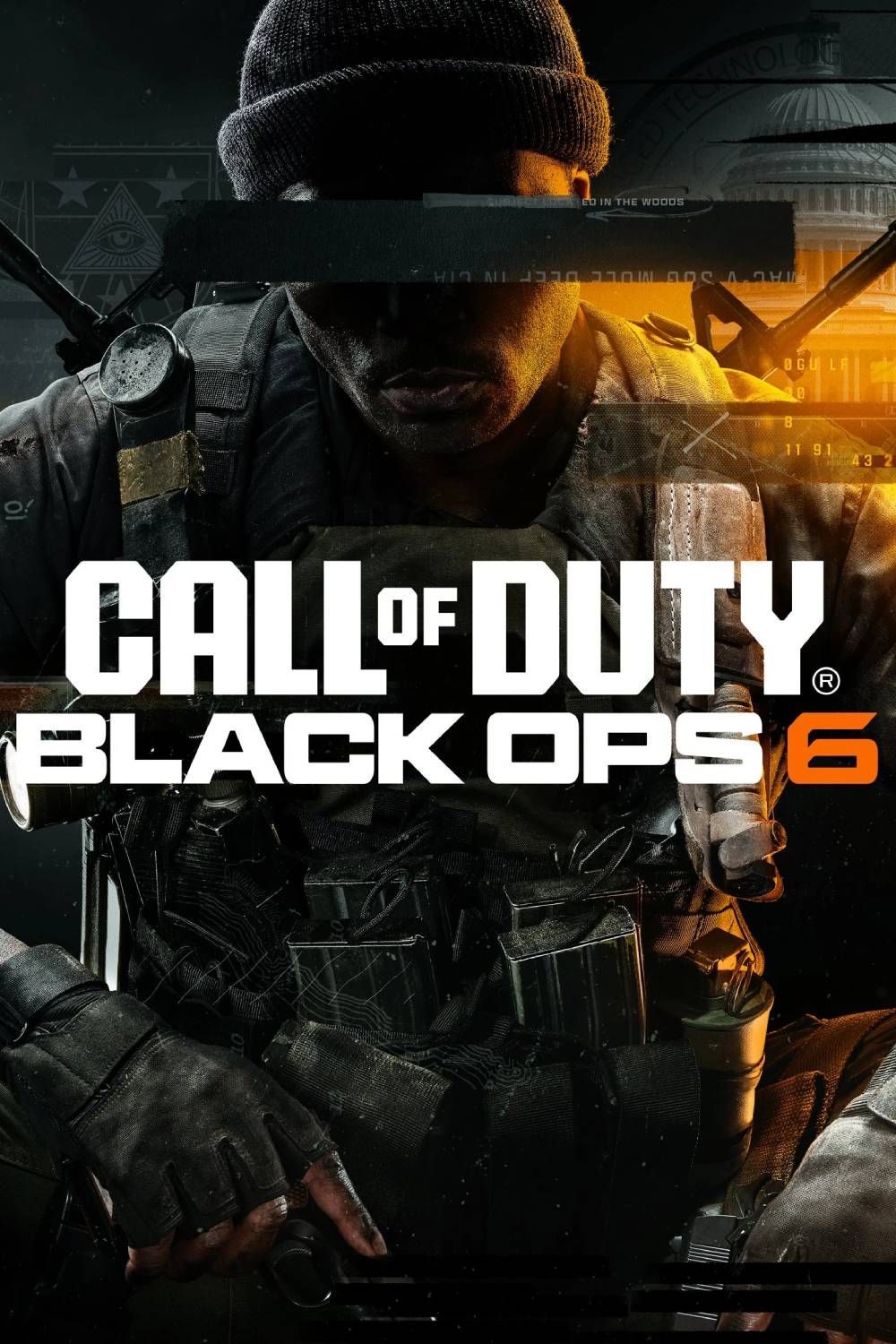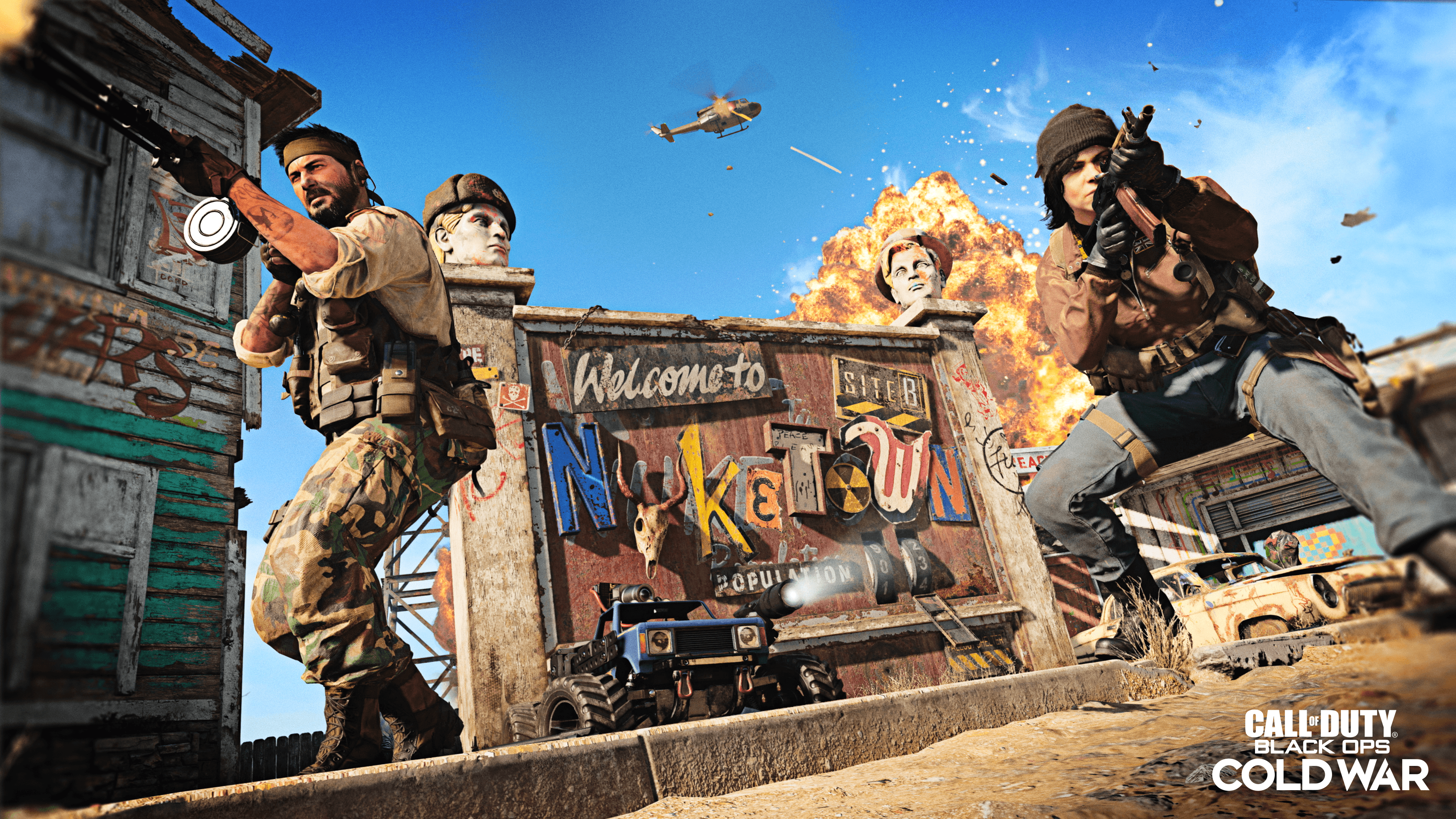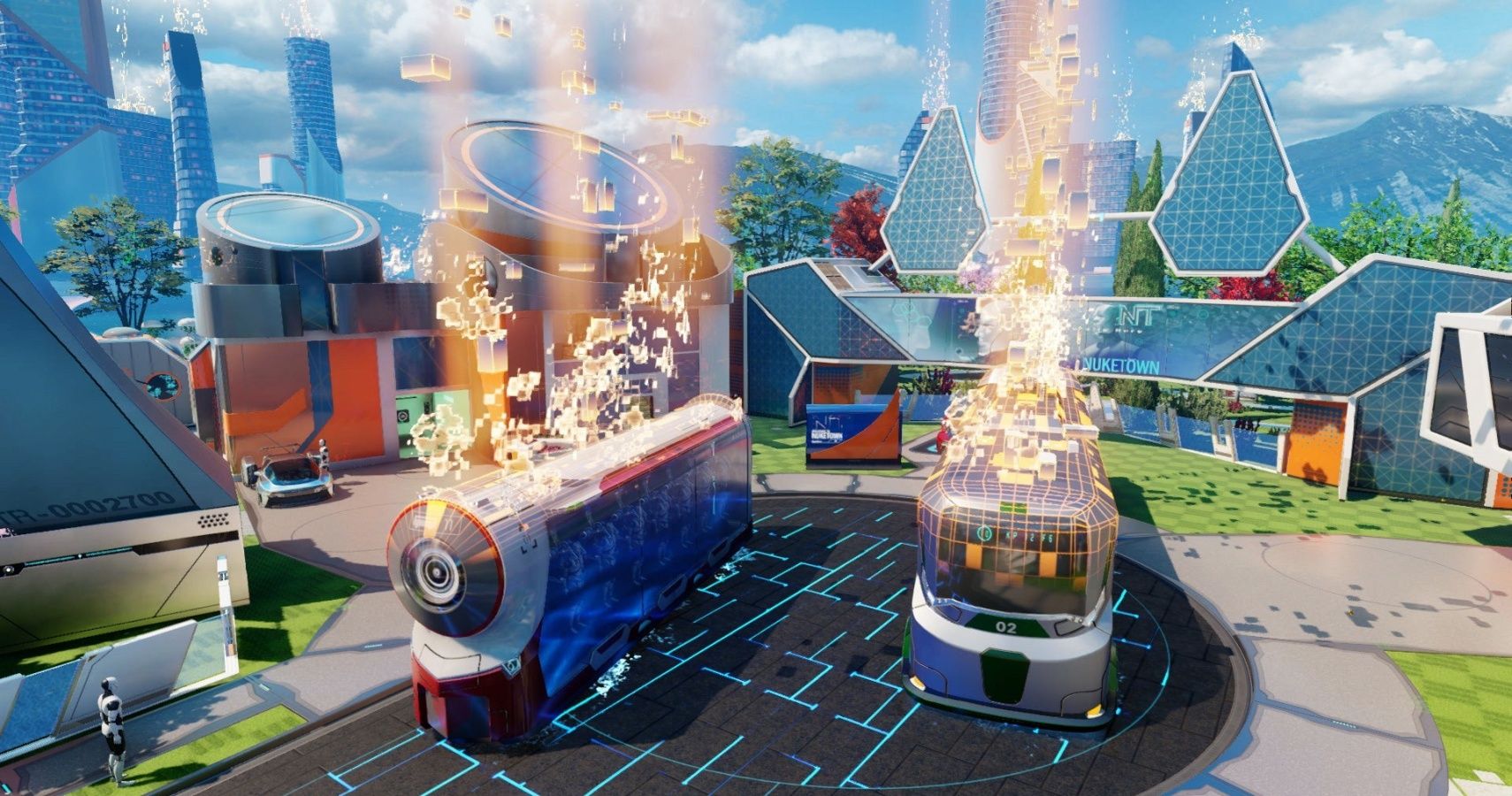
Why Are Call Of Duty Players So Obsessed With Nuketown?
Call of Duty: Black Ops wouldn’t be the same without Nuketown. The multiplayer map debuted alongside the first game way back in 2010, and with every entry since, it has received a new iteration while keeping the core design intact. It was even turned into a Zombies level. But why does it have such staying power?
One of the biggest appeals comes from its design. Black Ops was largely defined by its Soviet Union setting, a period after the Second World War in which much of the West was locked in a devastating nuclear arms race. The United States constructed testing grounds designed to mimic the look and feel of suburban towns at the time, only to throw a nuclear bomb on the place to see exactly how it would react.
Call Of Duty’s Nuketown Is A Multiplayer Map Like No Other
This visual alone is iconic in popular culture, and Black Ops builds on that imagery while combining it with the shock and awe the series is known for. It’s a multiplayer map that drops a Tactical Nuke at the end of every match, and it looks great and feels fantastic to play on. And it keeps on getting brought back, with Black Ops 6 remastering the original without a new bell or whistle in sight. Its presence has been made into a serious event, and players all seem keen to jump back in and apply their old strategies while coming up with new ones.
I’ve always associated Nuketown with Indiana Jones And The Kingdom Of The Crystal Skull, particularly a scene where Harrison Ford hides in a fridge to survive a nuclear blast.
In terms of its layout, Nuketown is a pretty traditional Call of Duty map. It focuses on three lanes with a mess of vehicles and structures in the middle. These are ideal for taking cover and laying traps while navigating your way through the maze and not meeting your death is a challenge in itself. Plenty of hiding places to camp and surprise your enemies has earned Nuketown a reputation for being fast, frantic, and unpredictable.
Two larger suburban houses complete with two floors and accompanying gardens wait on each side, acting as spawn points for each team as they prepare to sprint out into oblivion. As a fairly slow-paced Call of Duty
player who doesn’t love running into gunfire, my habit over the years was to overlook the entire map from the second floor before picking people off from a distance, changing sides again and again as I built up a killstreak.
Nuketown is neither too big nor too small, it sits somewhere in the middle and is perfect for both Team Deathmatch and Free For All, although some of the more complicated modes do not fare as well. That doesn’t matter though, because this is old school map design in a way that Call of Duty doesn’t really do anymore. It has moved on, but the consistent remastering of Nuketown allows us to feel both nostalgic and progressive at the same time.
It’s an easy map to reimagine with different visual motifs and gimmicks that remain integral to the wider identity of Black Ops. If a new entry in the series comes along, players are going to expect it, and Treyarch is more than happy to deliver. I bet there is a quiet thrill among the team that a map it helped usher in so long ago is still viewed so fondly, to the point where it operates as a unique selling point all its own.
2034 could come around, and I would still be happy to see Nuketown rear its head again, as I know it will either be remastered to ape its original self or pushing yet another boundary. Not every map does it like Nuketown, and this weekend I’ll be jumping into it once again.




